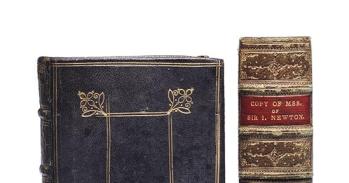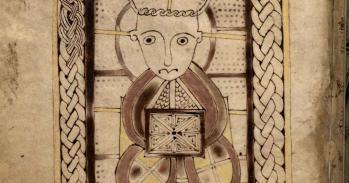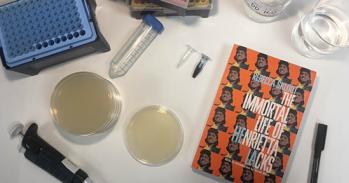The Life and Opinions of Tristram Shandy, Gentleman turned a Yorkshire clergyman into a literary celebrity. Three hundred years after his birth on 24 November 1713, Laurence Sterne’s quirky take on the novel continues to inspire. Dr Mary Newbould explores Sterne’s lasting impact.
The Life and Opinions of Tristram Shandy, Gentleman turned a Yorkshire clergyman into a literary celebrity. Three hundred years after his birth on 24 November 1713, Laurence Sterne’s quirky take on the novel continues to inspire. Dr Mary Newbould explores Sterne’s lasting impact.
He provoked strong reactions, not just among his audience, but also among other writers and artists who were inspired by Sterne’s defiance of the conventions of what a novel should be.
Dr Mary Newbould
In his introduction to the 1967 Penguin edition of Laurence Sterne’s The Life & Opinions of Tristram Shandy, Gentleman, the critic Christopher Ricks describes the novel as the greatest shaggy-story in the English language. He was right: it is an extraordinary book characterised by great loops of diversion that take the reader into the realms of theology, philosophy, theories of medicine and more. It has no beginning, middle and end – Tristram isn’t even born until Volume 3 - and Sterne employs a whole range of stylistic flourishes and typographical devices, including asterisks, squiggles and blank pages.
Earlier this year Cambridge academic Mary Newbould published a book – Adaptations of Laurence Sterne’s Fiction - that discusses the many ways in which Laurence Sterne’s novels (A Sentimental Journey was even more popular than Tristram Shandy) have inspired imitations, parodies and adaptations. Newbould has now curated an online exhibition of Sterne-related material (so-called Sterneana) that will appear on the website of Cambridge University Library to mark the writer’s birthday 300 years ago.
The online exhibition features material preserved in the Oates Collection - an archive of Sterneana collected by JCT Oates, a former librarian at Cambridge University Library (UL). The Oates Collection comprises some 600 or so items – from dating from the early 1760s to 1800 - which were gathered by Oates, an enthusiastic proponent of Sterne’s work. The collection, which built on an earlier archive, was given to the UL in 1986 and represents a unique resource for those studying the work of Sterne and his contemporaries.
“The Oates Collection – which ranges from pamphlets and handbills to musical scores and illustrations – demonstrates the breadth and diversity of the reception of Sterne’s fiction as measured through the imaginative responses that his work has sparked. He provoked strong reactions not just among his audience – who loved or loathed him – but also among other writers and artists who were inspired, perhaps liberated even, by Sterne’s defiance of the conventions of what a novel should be,” said Newbould.
The publication of Tristram Shandy in 1760 unleashed a spate of satirical pamphlets that lampooned Sterne’s narrative oddities and provocative humour. Most famous is The Clockmakers Outcry: it takes its cue from Tristram’s account of how his father saw to all the ‘little family concernments’ of winding the family clock – and other more intimate matters besides – on the first Sunday of the month ‘get them all out of the way at one time’. Sterne’s imitators also had great fun mocking his use of asterisks to disguise (and draw attention to) rude words. Pamphlets liberally sprinkled with stars in this way include The Life and Amours of Hafen Slawkenbergius, Author of the Institute of Noses, the nose being a famously Sternian euphemism for a p***s.
The characters in Sterne’s fiction were brought to life by some of the greatest artists and illustrators of his era. They include William Hogarth, Thomas Rowlandson and George Cruikshank. “Sterne’s gift for drawing his characters by using just a few, sparse details gave his readers plenty of scope for imagination and offered the artists who illustrated his novels licence to explore scenes and settings in all manner of ways – from the comic, to the touching, and even to the erotic,” said Newbould.
JCT Oates was disingenuous when he wrote of his collection of Sterneana that it represents the ‘rubbish of literature’. In a lecture, given at Jesus College in 1968 to mark the bicentenary of Sterne’s death, he said: ‘I confront the visitor not with the important books that he wishes to see but with the trivial books of which he has never heard’. It’s from this ‘trivia’ that we learn so much about the context within which Sterne pushed the boundaries of writing and created novels that have intrigued us for so long.
For more information about this story contact Alexandra Buxton, Office of Communications, University of Cambridge amb206@admin.cam.ac.uk 01223 761673
This work is licensed under a Creative Commons Licence. If you use this content on your site please link back to this page.





